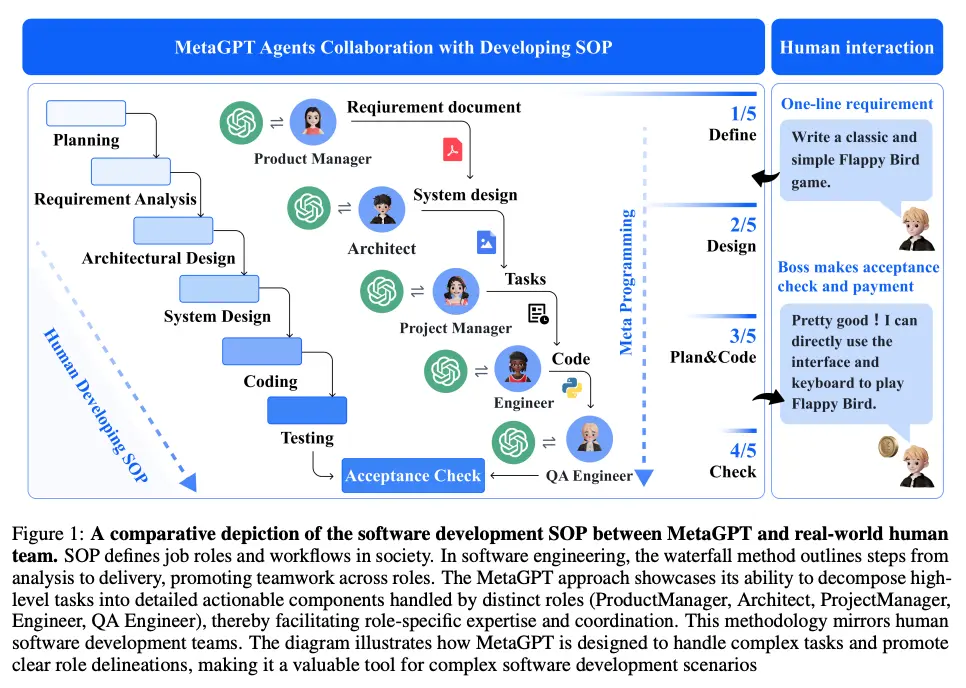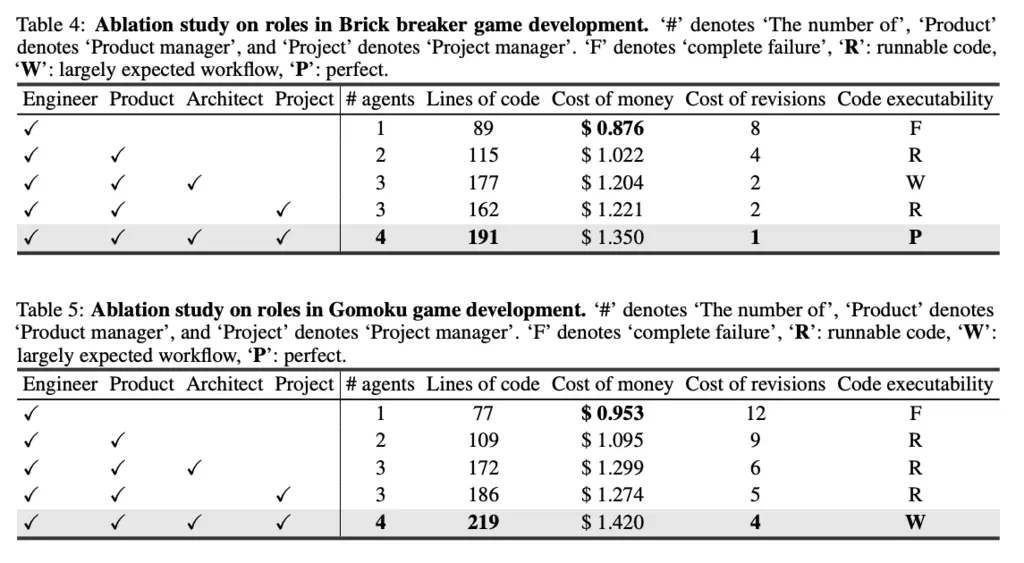Three Important Things
1. MetaGPT
MetaGPT is a multi-agent system, where different agents have their own roles, standard operating procedures (SOP), and goals.

In the paper, the goal of the overall system is to perform software development, with roles split between: Product Manager, Architect, Project Manager, Engineer, and QA Engineer.
The different roles are responsible for different parts of the system: given a single one-line prompt (i.e Make the 2048 sliding tile number puzzle game), the product manager will collect requirements and define the scope of the task, the architect will decide on the framework, overall architecture, and files of the project, the engineer will implement the code, and the QA engineer will run and debug the code.
2. Standardized Output Scheme
The authors enforce that the output schema for each action by the agents is standardized. This helps to create a uniform interface for communication, restricts possible behaviors of the LLM outputs, and aligns with real-world quality standards of software engineering development.
3. Diverse Roles Help
Ablation studies showed that removing roles resulted in worse performance across various game development tasks.

This shows that having agents specialized in different tasks to accomplish a complex task can result in improvements.
Most Glaring Deficiency
This still incurs high setup cost, where one must come up with a suitable role division when trying to create a multi-agent setting with distinct roles to tackle a problem. As such, it requires a lot of human input and priors, and there is no guarantee that our standard approach of structuring role divisions is actually the most effective one.
Could one also come up with a more general framework where even the required roles can be automatically learned, based on past failure points? For instance, a MetaGPT software development team could realize a need to be able to talk to a customer to improve the usability of a product (perhaps due to poor UI/UX scores in an alternative evaluation framework), and a customer role could be automatically added into the team.
As an aside, I found the paper unnecessarily verbose and repetitive.
Conclusions for Future Work
Multi-agent teams with specialized roles can be used to further break down complex tasks, in a similar spirit as Chain-of-Thought prompting.